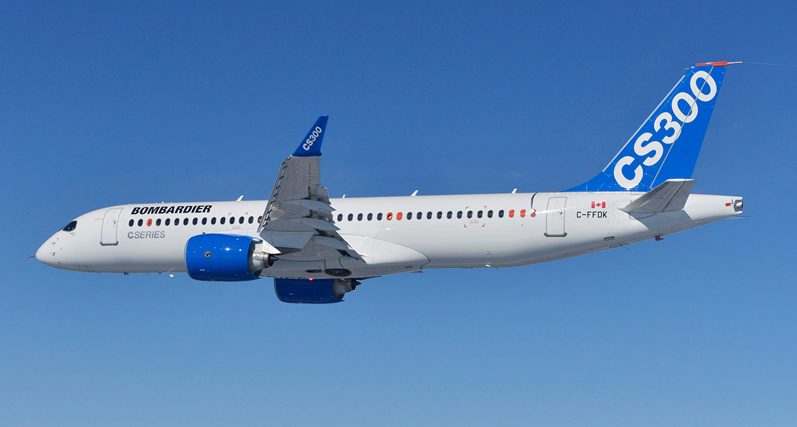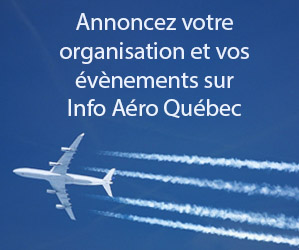“U.S. Chamber of Commerce Aviation Summit”
Michael Huerta, Washington, D.C.
March 2, 2017
U.S. Chamber of Commerce Aviation Summit
Good morning.
It’s an honor to be joining you today at the 16th annual U.S. Chamber of Commerce Aviation Summit.
And I would like to recognize Carol Hallett who thought a couple of decades ago that the business community should sponsor an aviation summit. Carol, may I say that you have succeeded beyond what anyone could have imagined. Congratulations and thank you for bringing us all together at this can’t miss forum.
A couple of my predecessors are here today – Allan McArtor and Marion Blakey.
Now, I’m sure they’d both agree that on the good days, being FAA Administrator is one of the best jobs in aviation.
On the rare bad day, it’s probably more like being the CEO of an airline – during the 1990s.
In all seriousness, it’s always a pleasure to speak to a group that shares an abiding passion for aviation.
You recognize that a safe and vibrant transportation system is the lifeblood of our nation’s economy, and aviation ties us closer together than ever.
Each day, more than 50,000 commercial airliners and general aviation airplanes take off and land safely in the U.S., connecting people – and ideas.
The people in this room make that happen.
I’m sure you’ve all seen the workplace signs that say “Safety is No Accident.” As you all know, when it comes to aviation, safety is intentional.
Every day, thousands of professionals across the nation come to work knowing that their primary responsibility is to make sure everything goes smoothly on their watch.
Today, because of the work we have done together we can all take a certain amount of pride in saying that aviation has never been safer.
In fact, during the span of most of our careers, flying in the United States has become exponentially safer – in part because of your willingness to tackle some very tough challenges.
As an agency – and as an industry – we’ve made significant strides because we’ve collaborated as a community.
This is of course most evident in the safety record we have achieved as a result of the work of the Commercial Aviation Safety Team. And we have now expanded those collaborative efforts to look at a broad range of operational challenges.
Early in my tenure, it became clear to me that modernizing the nation’s air traffic management system was much more than deploying a new technology platform. It requires fundamental changes in how all of us do business and a constant focus on how we deliver benefits.
We formed the NextGen Advisory Committee to enable us to set priorities and to deliver real benefits. Then, last year when we needed collaboration with traditional aviation leaders and new entrants to our community, we created the Drone Advisory Committee to help us tackle complex challenges.
Without a doubt, the path we have traveled together makes all of us at the FAA much smarter and more nimble.
My focus is to ensure the FAA fulfills its safety and oversight responsibilities within a framework that recognizes that innovation never stops.
At every turn, I’ve emphasized that we at the FAA share a common goal with those we regulate. We all want to leave our children a legacy that ensures the U.S. aerospace system is second to none.
Which brings me to the thoughts I wanted to share with you today.
It’s certainly the case that virtually everyone in this room recognizes that today we are operating the largest, most complex and safest air transportation system in the world.
I suspect it is also true that many in this room have engaged in debates during the past decades about just how our air traffic management system could best be structured.
From my perspective, discussing alternative approaches when our aviation community is strong and our system is being safely and effectively modernized through our NextGen initiatives represents the right time to be asking critical questions.
Along with my FAA colleagues, I am eager to engage in a full and honest review of the path we have traveled with many of you in this room to modernize the air traffic management system.
While I’ll be the first to acknowledge that we’d all like to move faster, I also firmly believe that any fair review of the past few years makes clear that our work together has been critical to the success of the tremendous progress we have made to revamp our air traffic system with the latest technologies.
We are ready today to move away from ground-based radars and make the transition to our GPS-based ADS-B network.
And we look forward to the January 1, 2020, deadline when all of our customers will have the necessary ADS-B equipment installed in their airplanes.
Meanwhile, the core computer systems in all our enroute centers have been replaced with modern hardware and software.
This new backbone is capable of incorporating every planned aspect of our ongoing modernization for decades to come.
Notice that I said ongoing.
The FAA can demonstrate that it has already delivered more than $2.72 billion in benefits under the NextGen modernization umbrella.
We expect that number to climb to $160 billion by 2030.
And for programs already underway, we expect to achieve $13 billion in benefits by 2020, at which time the benefits will exceed the projected investment in NextGen.
One of the reasons – actually, a key reason we’ve been successful – rests with a group I mentioned earlier.
Through our NextGen Advisory Committee – or the NAC, as we call it – the FAA and the industry have worked closely to identify and deliver the capabilities that matter most to the customers.
From its inception, the NAC has been led by senior airline executives with an intimate understanding of our shared challenges and opportunities.
In fact, our newest NAC chairman, David Bronczek, of FedEx, is here today. Dave, thank you for your willingness to put in the enormous amount of effort it takes to keep up with the broad range of improvements in the pipeline.
For those of you who don’t follow NextGen on a daily basis, I’d like to bring you up to speed on one unqualified success story.
Last year – at the request of the NAC – we focused a tremendous amount of effort on getting a technology called Data Comm into as many control towers as possible.
Data Comm allows air traffic controllers and pilots to communicate electronically, rather than by voice over busy air traffic frequencies.
At the beginning of 2016, Data Comm was operational at five airports. Today, it’s up and running at 55 towers nationwide.
For those of you keeping score at home, we are now 29 months ahead of schedule and under budget. We are planning to use those savings to install Data Comm in an additional seven towers.
So, we’ve come a long way from those years when our aviation agenda was defined by a fundamental challenge: How do we persuade the public that flying is safe?
In fact, by 2008, we had succeeded in reducing the commercial fatality risk by 84 percent from what it had been just a decade before.
Now, that’s a big number.
It’s even more impressive when you consider that – had we done nothing – the experts predicted we’d be experiencing a serious incident or accident every two weeks by now.
But, we know that this doesn’t mean we can all slap each other on the backs and go play some golf. We can never let our guard down when it comes to safety.
The moment safety takes a back seat – or even scoots over to let some other factor into the driver’s seat – we’ve lost the battle.
So where do we go from here?
Before I was asked to become the FAA’s Deputy Administrator in 2010, I was the president of a major division of a Fortune 500 company with experience in successfully fielding large, technology and infrastructure projects.
I want to put that hat back on for just a minute and report what I’ve found during my expedition into this wilderness of government bureaucracy and politics.
During the past three years, the FAA has been undergoing a noticeable cultural change as it has embraced what has truly been a fundamental redefinition of the term “aviation.”
For decades, aviation was defined as conventional aircraft doing what they’ve always done: Flying from Point A to Point B as seamlessly as possible.
Today, a host of new users want to do the same thing, but with small unmanned aircraft or commercial rocket launches.
All of our constituents are looking to the FAA to allow them to fly when and where they want, and to do so safely and efficiently.
As the steward of the National Airspace System, the FAA must find a way to balance these often-competing priorities. We must make sure that one of our nation’s most valuable assets – the air over our heads – remains safe and available to all Americans.
This balancing act has raised important questions about how our air traffic control system should be operated and who should pay for it.
And, this “balancing act” is further complicated when you realize that our success in some areas has impacts on our funding structure.
We have been spending a lot of time and money in developing efficient performance based navigation procedures. Better, quiet, more efficient engines reduce costs and emissions. But while PBN and better engine technology also greatly reduce fuel burn – a good thing – they also reduce fuel taxes which are an important contributor to the aviation trust fund that supports the FAA.
New users of the airspace with aircraft that are unmanned do not pay fees today.
Those who carry freight versus people pay varying charges. And, business aircraft pay widely varying charges while flying many of the same routes to the same destinations as commercial aircraft.
I think it’s fair to say that everybody has a point here. The question is: how do we have this conversation in a way that achieves a solution that works for all of us?
What will the airspace system look like in 10 years when those operators might also include an airborne version of Uber or Lyft?
Or when space tourists are taking suborbital flights on a daily basis from spaceports scattered across the country – some of them along heavily traveled transcontinental commercial routes?
These are public policy matters that must be addressed by all of our stakeholders.
I can tell you what most interests me and will be needed by future Administrators….
- A steady and reliable funding source;
- Access to capital for infrastructure projects
- Flexibility to utilize the funds in our accounts where needed most; And,
- the freedom to make major purchasing decisions without all of the current impediments.
There is no business that would invest in major infrastructure projects without some ability to borrow. No business would invest in new facilities without at least exploring third party financing or innovative development approaches.
So here’s my challenge to you: Let’s find a way to collaboratively solve these questions.
Let’s find a solution that reflects the best interests of the American people and protects the safety and flexibility of this extremely valuable public asset.
Like our predecessors who came together six decades ago to make sure the world’s most glamorous and exciting form of transportation was also safe, we are at a decision point.
Obviously, we have myriad challenges. But we also have choices. We can each focus our energy on trying to protect what we’ve got – which frankly, is a shortsighted approach.
This industry was founded on the principle that we have the intellectual depth and strength of character to accomplish the impossible.









Commentaires